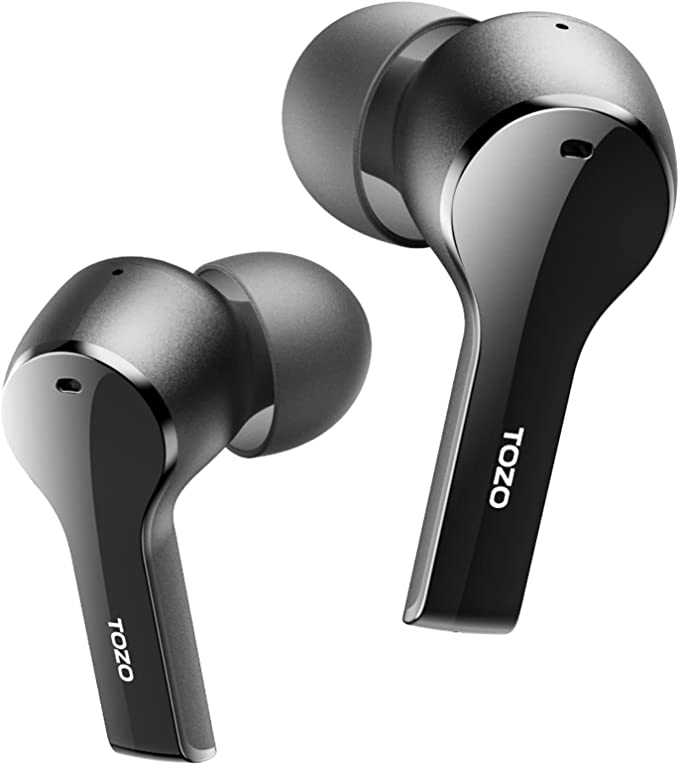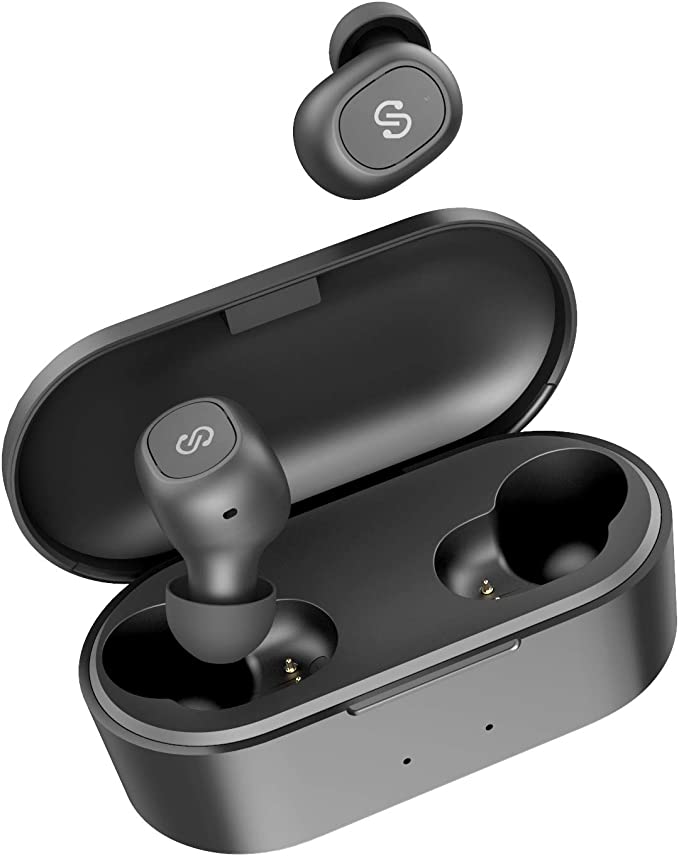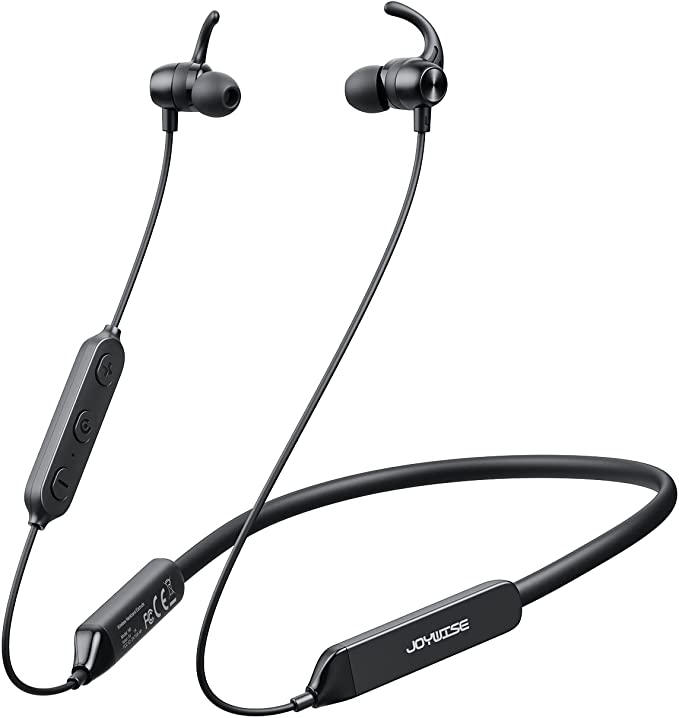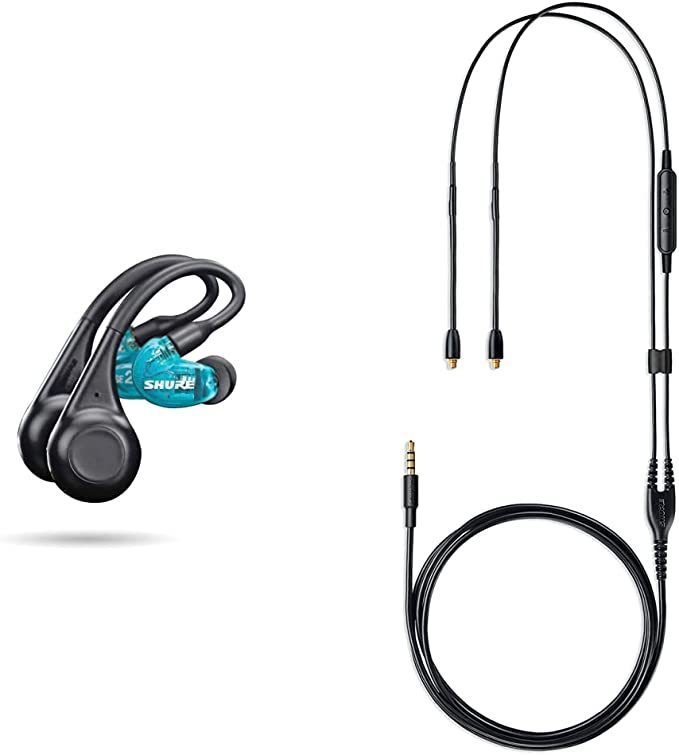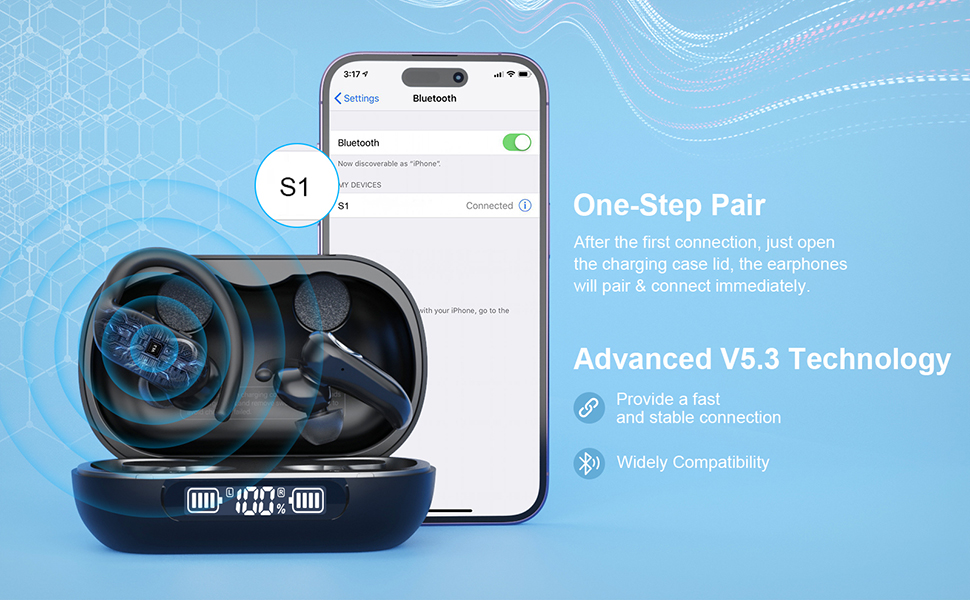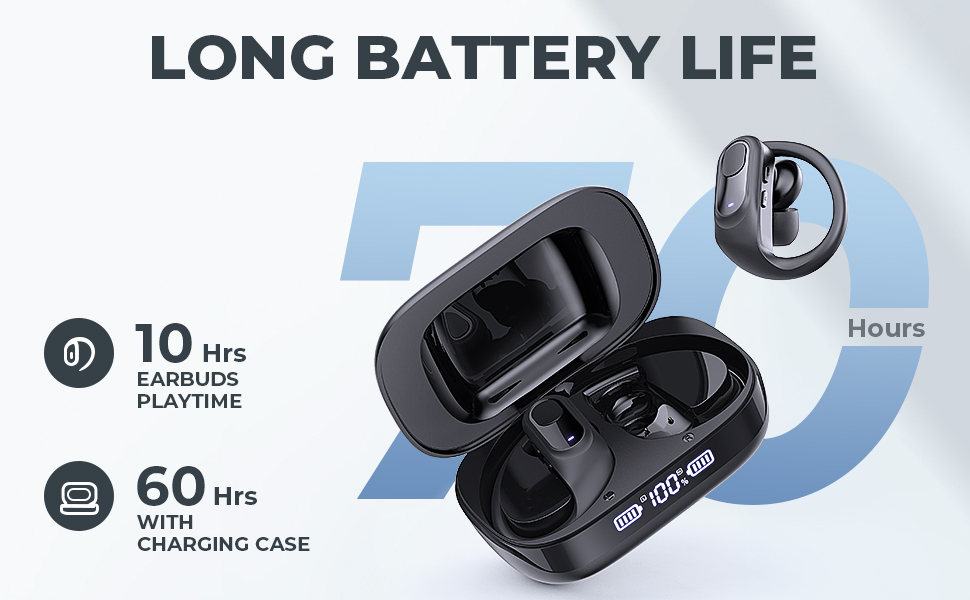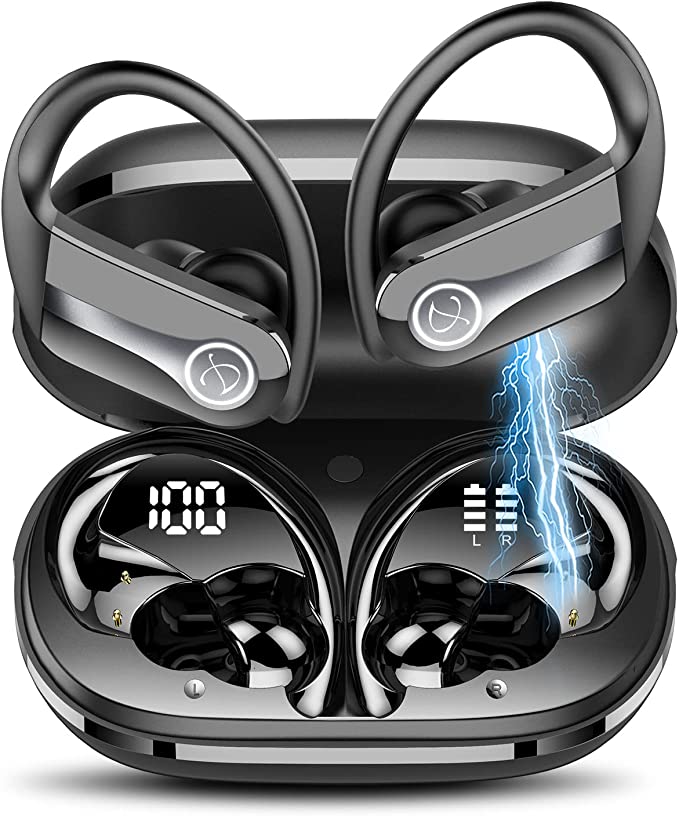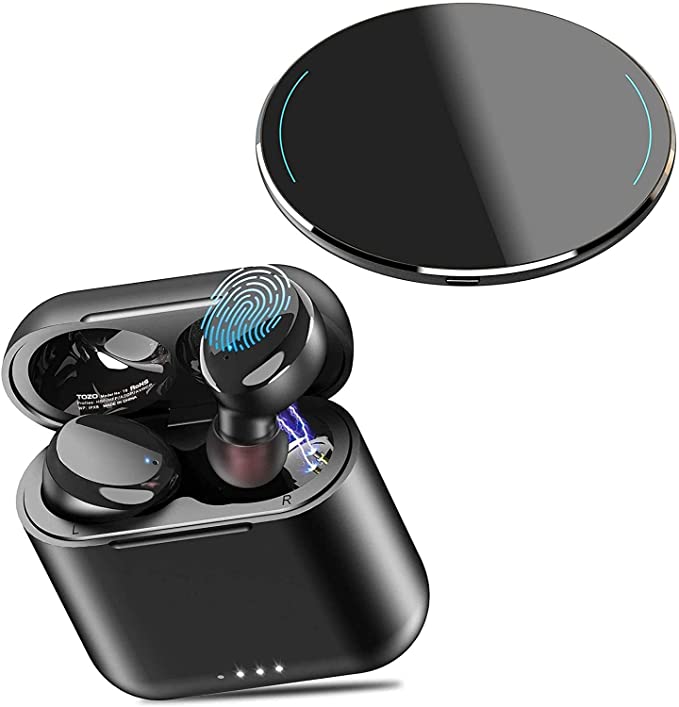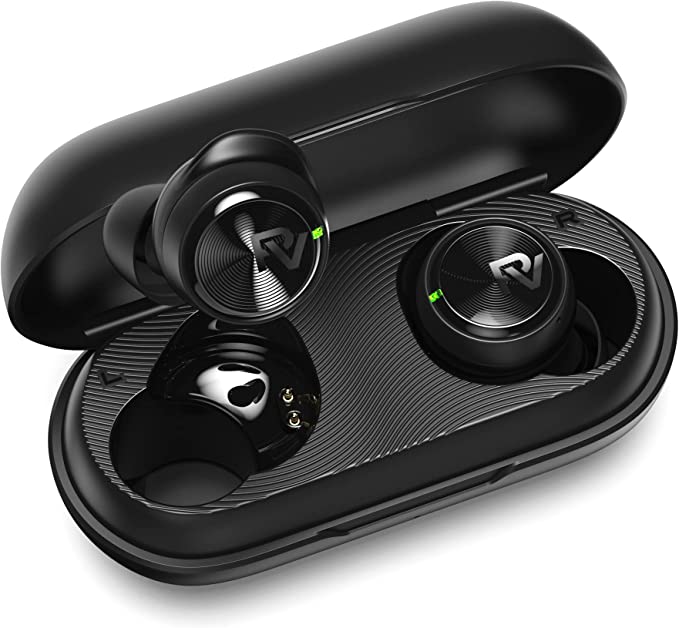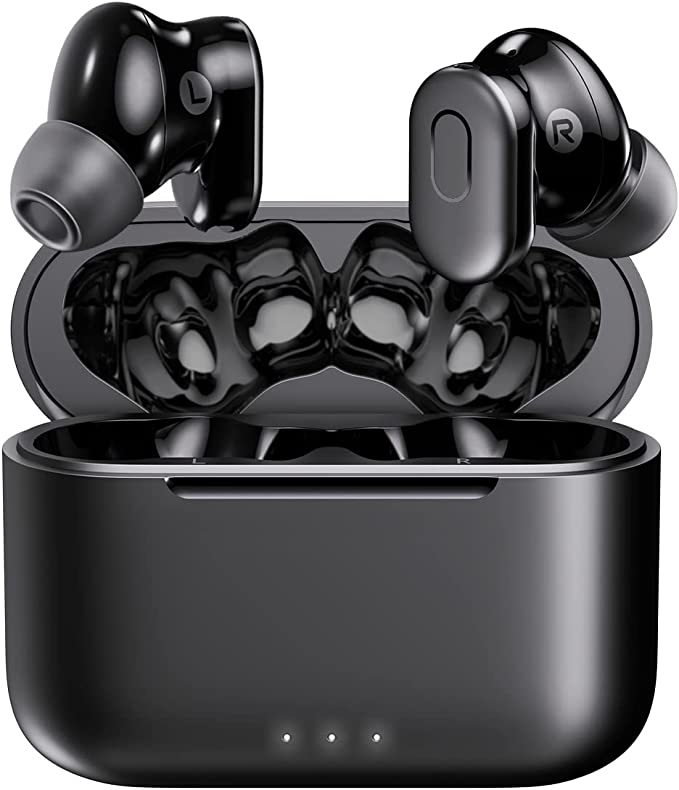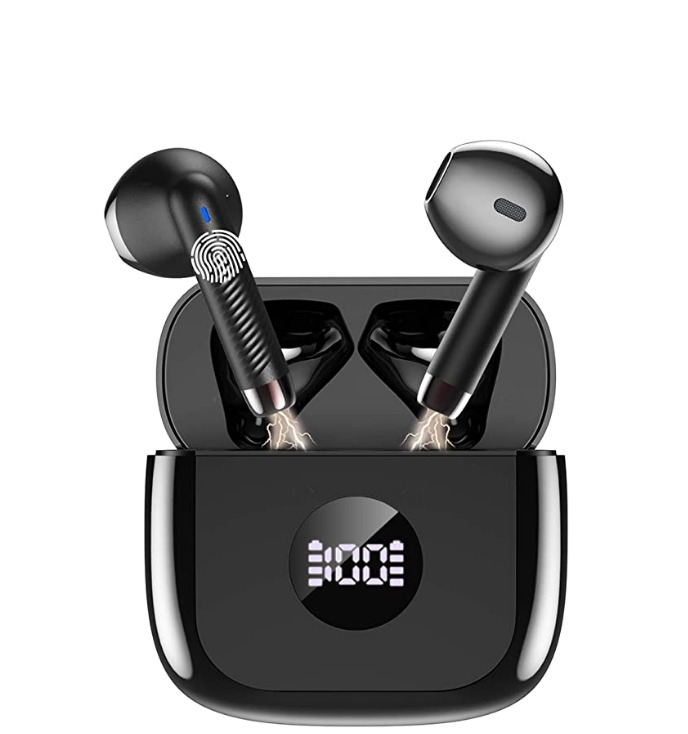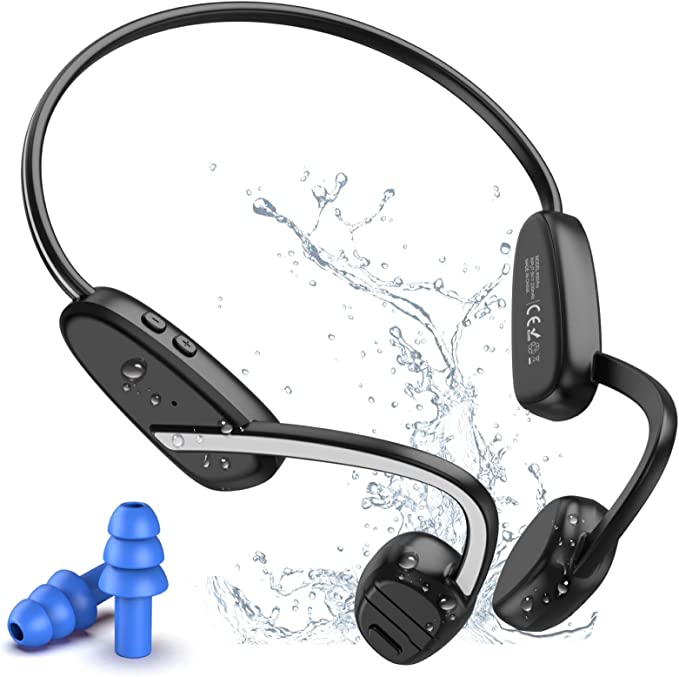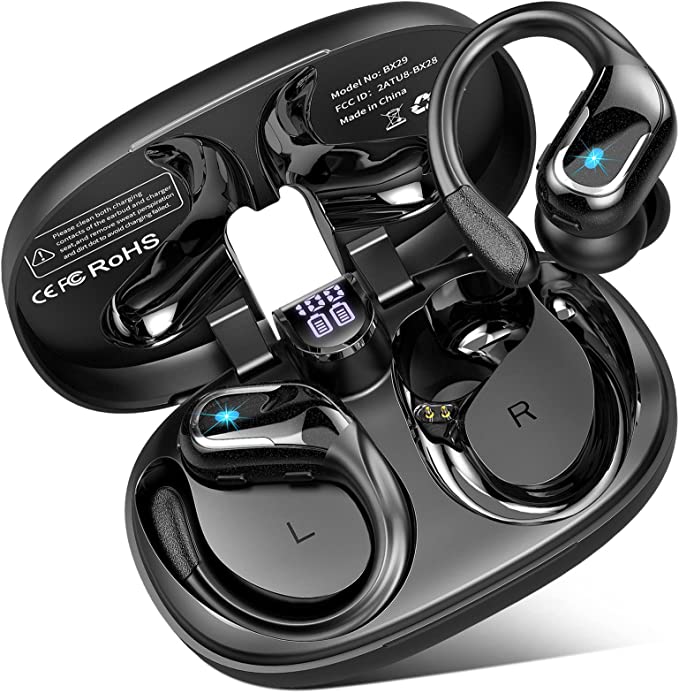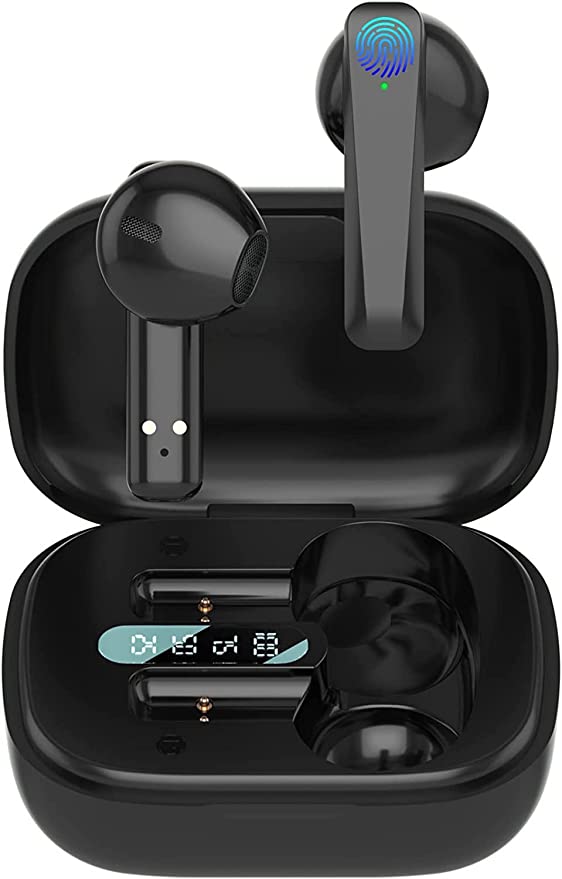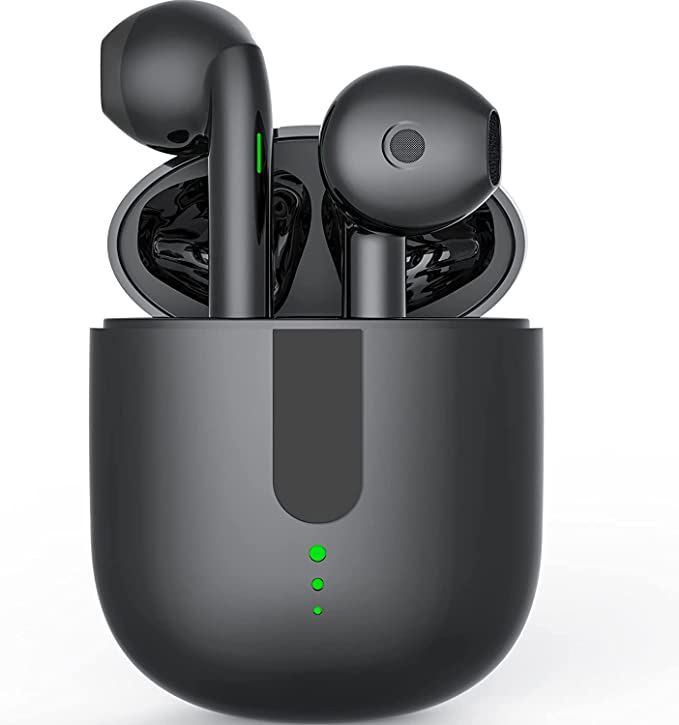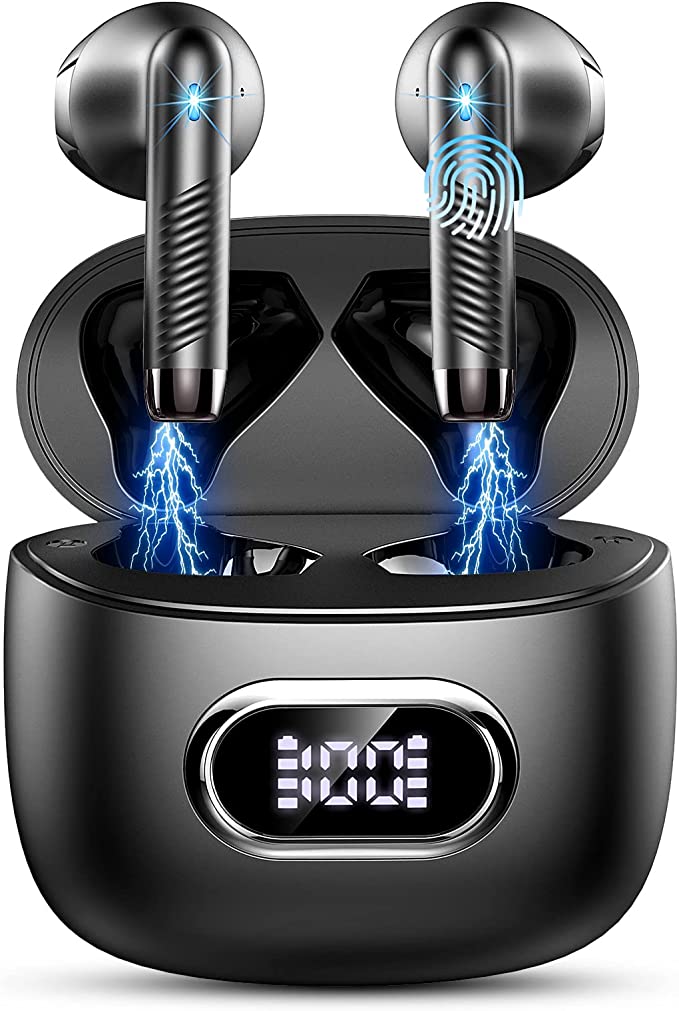JOYWISE NC1 Wireless Earbuds: The Science of Serene Sound and Crystal-Clear Communication
Update on May 15, 2025, 4:30 a.m.
In the symphony of the 21st century, silence has become a rare instrument. Our days are often a crescendo of urban clamor, digital notifications, and the pervasive hum of a world that never quite sleeps. We navigate this bustling soundscape armed with an innate human desire: the quest for auditory control. From the simple act of cupping hands over our ears ages ago, to the humble earplug, and now to remarkably sophisticated personal audio electronics, we’ve continuously sought ways to filter, manage, and curate what we hear.
Today, we’re not just passively receiving sound; we’re actively shaping our personal acoustic environments. The JOYWISE NC1 Wireless Earbuds, while a specific product, serve as a fascinating portal through which we can explore the applied science that makes this personalized auditory world possible. This isn’t a review in the conventional sense. Instead, consider this an expedition, a journey into the intricate technologies nestled within these compact devices. Together, we’ll unpack the scientific principles and engineering marvels that empower you to mute the chaos, amplify clarity, or simply lose yourself in the pure, unadulterated joy of sound. Prepare to discover how physics, electronics, and material science converge to bring a new level of control and richness to your listening experience.

Crafting Your Personal Oasis: The Marvel of Hybrid Active Noise Cancellation
The allure of Active Noise Cancellation, or ANC, extends far beyond the simple promise of quiet. It’s about crafting a personal sanctuary, an oasis of calm amidst the storm of external noise. But how does a tiny earbud achieve such a feat, seemingly bending the very nature of sound to its will? The answer lies in a clever application of physics, a concept known as destructive interference, elevated by sophisticated engineering.
Sound, as you might recall, travels in waves, with peaks and troughs. Imagine dropping a pebble into a still pond – ripples spread outwards. Now, imagine if you could create another set of perfectly opposing ripples that, when meeting the first set, would flatten the water’s surface. That, in essence, is what ANC strives to do with sound waves. The JOYWISE NC1 earbuds employ what’s known as Hybrid Active Noise Cancellation. This is a more advanced approach than some earlier ANC systems because it uses a “dual defense” strategy. Firstly, a microphone on the outside of the earbud (feedforward microphone) detects external noise before it even reaches your ear. Secondly, another microphone on the inside, close to your ear canal (feedback microphone), listens for any noise that might have slipped past the first defense or originated within the ear cup itself. This two-pronged approach allows for a broader and more accurate cancellation of unwanted sounds.
The onboard electronics then become a miniature acoustic alchemist. They instantly process the detected noise and generate a new sound wave that is precisely 180 degrees out of phase with the unwanted sound – its “anti-noise.” When the original noise and this newly created anti-noise wave meet, they effectively neutralize each other. The result? A significant reduction in the perceived ambient sound.
JOYWISE states these earbuds can achieve “up to $30 \text{ decibels (dB)}$” of noise cancellation and prevent “90% of noise from entering the ear canal.” To appreciate what $30 \text{ dB}$ means, it’s helpful to remember that the decibel scale is logarithmic. A $10 \text{ dB}$ reduction is perceived as roughly halving the loudness, so a $30 \text{ dB}$ reduction is substantial – it can transform the roar of an airplane engine into a gentle hum, or the distracting chatter of an open-plan office into a barely perceptible murmur. That “90% noise prevention” is an ambitious figure, as effectiveness always depends on the type and frequency of the noise.
The journey of ANC is quite fascinating. While the core principles were understood earlier, practical applications began to emerge in fields like aviation in the mid-20th century. Pilots, needing to hear crucial communications over deafening engine noise, were among the first beneficiaries. Lawrence Jerome Fogel is often credited with one of the pioneering patents in the 1950s for a system to cancel noise in helicopter cockpits. From these specialized, bulky systems, ANC technology has miniaturized 드라마tically, now fitting comfortably within the confines of an earbud.
For you, the user, this sophisticated science translates into tangible benefits. Imagine your daily commute: the rumble of the train or bus fades, allowing you to dive into a podcast or simply gather your thoughts. In a noisy office, ANC can be a gateway to deeper concentration. And for music lovers, it means an immersive experience where subtle nuances in your favorite tracks are no longer drowned out by the world outside.
However, it’s important to approach ANC with realistic expectations, as even the most advanced systems have their nuances. ANC is a champion against constant, low-frequency sounds – think the drone of an engine, the hum of an air conditioner, or the distant thrum of traffic. It’s generally less effective against sudden, sharp, irregular sounds like a door slamming, a dog barking nearby, or close-proximity conversations. This is because these sounds are often too quick or complex for the system to react to and generate a perfect anti-noise wave in time. Similarly, higher-frequency sounds are often better attenuated by the physical barrier of the earbud itself (passive noise isolation) rather than the active cancellation. So, while not a magic silence button for all situations, Hybrid ANC in the JOYWISE NC1 represents a significant leap in our ability to curate our personal sound environments.

The Art of Being Heard: Engineering Crystal-Clear Conversations
In an increasingly connected world, where virtual meetings and calls on the go are the norm, the ability to communicate clearly is not just a convenience—it’s a necessity. Yet, how often have you found yourself frustrated, straining to hear or be heard over a cacophony of background noise? The JOYWISE NC1 earbuds address this challenge with a dedicated system for enhancing call performance, centered around a four-microphone array – two microphones strategically placed in each earbud.
Simply having multiple microphones isn’t the whole story; it’s how their inputs are intelligently processed that makes the difference. While the precise algorithms are proprietary, the underlying principles often involve two key technologies: beamforming and noise suppression.
Imagine beamforming as a sort of auditory spotlight. By analyzing the subtle differences in how sound arrives at each microphone in the array, the system can electronically “steer” its focus towards the primary sound source – your voice – while simultaneously de-emphasizing sounds arriving from other directions. It’s like the microphones are working together to selectively “listen” to you.
Complementing this is noise suppression. Once your voice is identified as the primary signal, the algorithms work to filter out or reduce the level of other remaining background sounds. This could be the constant hum of traffic, the chatter in a café, or the whir of an office fan. The system is essentially trying to distinguish between the desirable speech signal and the undesirable noise, then attenuating the latter.
The result? Your voice is intended to come through with greater clarity and prominence, making conversations sound more professional and less like you’re battling the elements. For anyone who frequently takes calls in less-than-ideal acoustic environments – perhaps while commuting, walking down a busy street, or in a lively open office – this technology aims to be a significant boon. It’s worth noting the product guidance to wear both earbuds during a call; this ensures the full four-microphone array is operational, allowing the beamforming and noise suppression algorithms to perform optimally and deliver the clearest possible audio of your voice to the person on the other end.

Bridging Worlds: The Intelligent Utility of Transparency Mode
While the immersive quietude offered by Active Noise Cancellation is often a welcome escape, there are many moments when complete isolation from our surroundings isn’t just undesirable, but potentially unsafe. Crossing a busy intersection, listening for platform announcements at a train station, or engaging in a quick conversation with a colleague—these are all instances where being attuned to the world around us is paramount. This is precisely where the Transparency Mode feature of the JOYWISE NC1 earbuds demonstrates its intelligent utility.
Transparency Mode isn’t merely about switching off the ANC. Instead, it actively uses the earbuds’ built-in microphones – the same ones that help with noise cancellation and calls – to strategically capture specific external sounds and relay them to your ears in a balanced way. It’s like giving your ears a carefully curated pass to listen to the outside world without having to remove the earbuds.
The JOYWISE NC1’s implementation of this mode is designed to “enhance the voice frequency band.” This is a thoughtful detail. By prioritizing the frequencies typically associated with human speech, it makes it easier to hear conversations or important vocal announcements clearly, while still potentially dampening some of the more jarring or irrelevant ambient noises. You can order your coffee, chat with a store clerk, or hear a cyclist approaching, all while your music or podcast continues to play at a comfortable level (or pauses, depending on your settings and the specific implementation).
Activating this feature, typically with a simple press-and-hold gesture on the earbud, allows for a seamless shift between deep immersion and heightened awareness. It’s a testament to how modern audio technology is becoming increasingly adept at not just isolating us from sound, but also at intelligently integrating us with our sonic environment, offering a delicate and highly useful balance between our digital audio and the physical world. This thoughtful feature truly enhances the practicality of wireless earbuds, making them a more versatile companion throughout the varied contexts of a busy day.

The Invisible Lifeline: Understanding Bluetooth 5.3 and Seamless Connectivity
The magic of true wireless earbuds—that untethered freedom to move while immersed in sound or conversation—hinges entirely on the robustness and efficiency of their wireless connection. The JOYWISE NC1 earbuds are equipped with Bluetooth 5.3, one of the more recent iterations of this ubiquitous short-range wireless technology. Understanding why this version matters sheds light on the quality of your everyday listening experience.
Bluetooth technology has come a long way since its inception in the late 1990s, when it was primarily envisioned for replacing data cables between devices. Each new version has brought improvements, and Bluetooth 5.3 continues this trend, focusing on several key areas crucial for audio performance:
-
Enhanced Connection Stability and Efficiency: Bluetooth 5.3 introduces features like “Connection Subrating” and improved “Periodic Advertising.” Without getting lost in technical jargon, these allow devices to switch more efficiently between low-power and high-performance states and to reduce redundant data transmissions. For you, this translates into more stable connections with fewer unexpected dropouts, even in environments crowded with other wireless signals. It also means your earbuds and your phone can manage their power more intelligently, which is a subtle but important contributor to overall battery life.
-
Potentially Lower Latency: While not solely a feature of Bluetooth 5.3 itself, it builds upon the foundation that supports LE Audio (Low Energy Audio), a newer generation of Bluetooth audio which includes the LC3 codec. This codec is designed to deliver good audio quality even at lower data rates, and, crucially, it’s engineered for lower latency. Latency is that slight delay between when an audio signal is sent from your phone and when you actually hear it. High latency can be particularly noticeable and distracting when watching videos (lip-sync issues) or playing games. While the JOYWISE NC1 product information doesn’t explicitly detail the supported codecs, the presence of Bluetooth 5.3 creates a robust platform capable of leveraging such advancements for a more synchronized experience.
-
Faster Data Throughput (Compared to Older Generations): While Bluetooth 5.3 doesn’t massively increase the maximum data rate over, say, Bluetooth 5.0, its overall efficiency and protocol improvements ensure that the available bandwidth is used more effectively. This is important for handling the data streams required for high-quality stereo audio, especially when combined with other functions like ANC processing and microphone data for calls.
Think of Bluetooth as an invisible, highly skilled courier, constantly ferrying audio data packets between your source device and your earbuds. Bluetooth 5.3 equips this courier with better navigation tools (for stability in crowded environments), a more energy-efficient vehicle (for battery life), and the ability to deliver its parcels more promptly and reliably (for audio quality and lower latency). The “auto pairing when open the charging case after first connection” is another layer of convenience built upon this solid wireless foundation, making your daily interaction with the JOYWISE NC1 feel that much more seamless.
The Heartbeat of Your Music: Deconstructing the 10mm Composite Drivers
At the very core of any earbud or headphone, the component responsible for transforming electrical audio signals into the sound waves that grace your eardrums is the driver. It’s the unsung hero, the miniature loudspeaker that breathes life into your music. The JOYWISE NC1 earbuds feature 10mm Oversized Composite Drivers, and both “10mm” and “composite” are significant clues to their acoustic aspirations.
Let’s first consider the size: 10mm. In the realm of in-ear headphones, a 10mm diameter for the driver diaphragm is relatively generous. The diaphragm is a thin membrane that vibrates to create sound. Generally speaking, a larger diaphragm has the physical capacity to move more air. This is particularly advantageous for reproducing lower frequencies – the bass notes that provide depth, warmth, and impact to music. So, when JOYWISE mentions “full-bodied bass,” the 10mm driver size is a key contributing factor to that claim. It allows for a more effortless and substantial low-end response compared to smaller drivers, which might struggle to produce the same level of bass without distortion or a lack of presence.
Now, let’s look at the material: “Composite”. The diaphragm’s material is just as critical as its size. An ideal diaphragm needs to be incredibly light, allowing it to respond with lightning speed to the rapid changes in the audio signal (this is crucial for clear treble and detailed midranges). Simultaneously, it needs to be very rigid, so that it vibrates as a single, piston-like unit without flexing or deforming, which would otherwise introduce distortion and color the sound unnaturally.
“Composite” implies that the diaphragm isn’t made from a single, simple material, but rather a carefully engineered blend or layered structure. Common materials used in composite diaphragms for headphones might include various polymers (like PET or PEN), bio-cellulose, or even more exotic coatings like titanium or beryllium (though the latter are usually found in higher-priced audiophile gear). Each material brings different properties of stiffness, lightness, and internal damping. By creating a composite, engineers aim to achieve a “best of all worlds” scenario – a diaphragm that is stiff enough to prevent breakup at high volumes or complex passages, yet light enough to accurately reproduce the most delicate high-frequency “bright treble” and the subtle textures in voices and instruments.
The ultimate goal of such a driver design is to achieve a balanced, articulate, and engaging sound signature across the entire audible spectrum. It’s about more than just loud bass or sharp highs; it’s about creating a coherent and faithful translation of the original electrical signal into an emotional and enjoyable acoustic experience. The 10mm composite drivers in the JOYWISE NC1 are thus the heart of its audio reproduction, working diligently to turn mere data into the moving power of music.
Engineered for Endurance: IPX6 Resilience and All-Day Playtime
Beyond the intricacies of sound reproduction and noise cancellation, the practicalities of daily use demand a certain level of resilience and stamina from our personal audio devices. The JOYWISE NC1 earbuds address these real-world needs with two key features: an IPX6 waterproof rating and a commendable total playtime of up to 30 hours.
Let’s first demystify that IPX6 rating. “IP” stands for Ingress Protection, and it’s an international standard (IEC 60529) that classifies the degree of protection provided by enclosures of electrical equipment against the intrusion of foreign objects (like dust, though the “X” here means it wasn’t specifically tested for dust ingress in this rating) and, crucially in this case, moisture. The “6” in IPX6 is quite specific: it signifies that the earbuds are protected against powerful water jets. This means they can withstand being sprayed with water from any direction with considerable force – think heavy rain, a powerful splash, or even a deliberate rinse under a tap (though manufacturers usually advise against intentionally submerging them or exposing them to soap). For you, this translates to peace of mind. You can confidently wear them during an intense, sweaty workout, get caught in an unexpected downpour on your commute, or not panic if a drink accidentally spills nearby. This level of water resistance makes them a much more robust companion for an active and unpredictable lifestyle.
Equally important for uninterrupted enjoyment is the battery life. The JOYWISE NC1 earbuds themselves offer over 7 hours of playtime on a single charge when Active Noise Cancellation is off (at a moderate 50% volume). Engaging ANC, which requires additional processing power, understandably reduces this to a still very usable 5 hours. But the story doesn’t end there. The accompanying charging case acts as a portable power bank, holding an additional 23 hours of charge. This brings the total available playtime to approximately 30 hours before you need to find a power outlet for the case itself.
Consider what this means in practical terms: for many users, this could easily translate to several days, or even a full week, of typical usage – perhaps an hour or two during the daily commute, a couple of hours at the gym or during focused work sessions, and some leisure listening in the evenings. This extended endurance significantly reduces “battery anxiety” and ensures that your earbuds are ready whenever you need them, from an early morning podcast to a late-night music session, without constantly worrying about the nearest charging point. This combination of IPX6 resilience and long-lasting power makes the JOYWISE NC1 not just technologically advanced, but also a practical and dependable partner for your daily audio needs.
Conclusion: The Personalized Soundtrack of Your Life
Our journey through the inner workings of the JOYWISE NC1 Wireless Earbuds reveals a compelling narrative: one where intricate scientific principles and thoughtful engineering converge to empower us, the listeners. We’ve seen how the physics of destructive interference is harnessed to craft pockets of tranquility with Active Noise Cancellation, how sophisticated microphone arrays and algorithms strive to lift our voices above the din for clearer conversations, and how the careful selection of driver size and materials aims to translate electrical signals into rich, emotive sound.
Bluetooth 5.3 stands as the invisible yet vital conduit, ensuring that this complex interplay of data flows seamlessly and efficiently. Features like Transparency Mode demonstrate an intelligent awareness of our need to sometimes bridge our personal audio bubble with the world around us, while IPX6 water resistance and extended battery life speak to the practical demands of an active, modern lifestyle.
The JOYWISE NC1, then, is more than just a collection of impressive specifications. It represents a microcosm of the broader evolution in personal audio technology – a continuous pursuit of greater immersion, clearer communication, enhanced convenience, and deeper interaction with the sounds that shape our lives. By understanding the science and engineering that breathe life into such devices, we move beyond being passive consumers to become more informed and appreciative users. We begin to recognize the immense complexity and ingenuity packed into these tiny companions.
Ultimately, the goal of such technology is to allow each of us to more effectively curate the personalized soundtrack of our lives – to choose when to tune in, when to tune out, what to amplify, and what to silence. As audio science continues its relentless march forward, the power to shape our sonic world will only grow, promising even more immersive, intuitive, and enriching ways to experience the profound power of sound.

